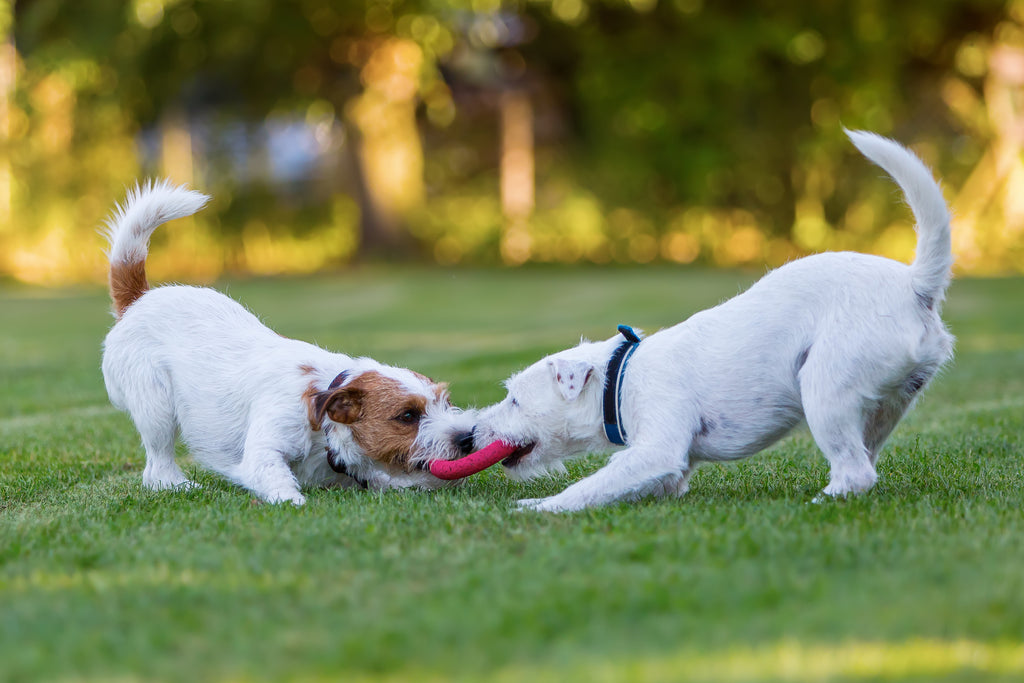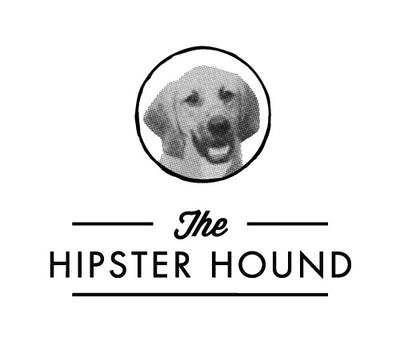
At The Hipster Hound, we are all about dogs playing together and having a good time. Sometimes two dogs will have a rousing game of tug-o-war, or a big group of dogs will have a wild wrestling match. We can get pretty loud and crazy, but as long as it’s gentle and friendly, everyone seems to have a blast! My mom, Tonya, has tasked me, Rex, THE Original Hipster Hound, and the other yard attendants with making sure that all of our doggy daycare pups stay safe and that their playtime doesn’t turn from roughhousing into actual aggression. It’s a very important job to be able to identify the signs of aggressive behavior to prevent injury and keep the play yards violence-free.
Some Influences of Aggressive Behavior
- Social development: Dogs who were isolated growing up are more likely to show aggression than dogs who were socialized.
- Stress or fear: Dogs are more likely to show aggression when they are under stress or are scared.
- Learned behavior: If a dog displays aggression and the thing they were scared of goes away, the behavior may have been reinforced and will likely happen again.
- Hormones: Elevated levels of testosterone may manifest as aggression in dogs, and females in breeding season or with litters may demonstrate more aggression.
Signs of Aggression
To prevent playing from turning into fighting, the yard attendants watch carefully for stress signals and warning signals. Some of the most common warning signals are:
- Stiffness: When dogs become tense and stressed, they usually appear rigid and stand in a stiff-legged stance. Their face is another indicator, so look for muscles tightening or furrowed brows.
- Direct stare: Another indicator of a stressed dog is when they intently focus on another dog without blinking or engage in excessive and aggressive stalking.
- Snarling: Tiny muzzle movements associated with a lip snarl may be an indicator of an uncomfortable dog. Dogs will often lift their lip in a snarl before they growl or snap.
- Growling: Sometimes dogs will growl during play, but these growls are accompanied by loose, relaxed body language. When growling is followed by any of the above behaviors or is deep and low, it may be a sign of aggressive behavior that needs to be addressed.
Time to Intervene
When dogs play, it often takes the form of play fighting, play biting, and wrestling. Although it can be fun and harmless, sometimes this can intensify into unsafe and serious scraps if the yard attendants do not observe the dogs closely. If we encounter an aggressive moment between dogs, it’s often not enough to let them work it out on their own. We find that it’s better to keep the pups safe and intervene, rather than letting the dogs continue to engage in a potentially dangerous situation.
How to Prevent Aggressive Behavior
To discourage aggressive behavior from our four-legged friends, we suggest that dog parents introduce a solid training program and good socialization into their schedules. There are some basic steps that can be taken to decrease this behavior:
- Socialize your dog early: Schedule play dates with other puppies and well-mannered adult dogs who can teach your puppy to behave, or you can schedule your doggy daycare evaluation at The Hipster Hound today!
- Neuter or spay your dog: Do this as early as possible to help reduce hormone-driven aggression.
- Use positive reinforcement: Treat your dog kindly and never intimidate or physically correct your pup.
- Supervise your dog at all times: Don’t leave dogs unattended where they can adopt inappropriate behaviors.
Woof,
Rex, The Original Hipster Hound

Leave a comment